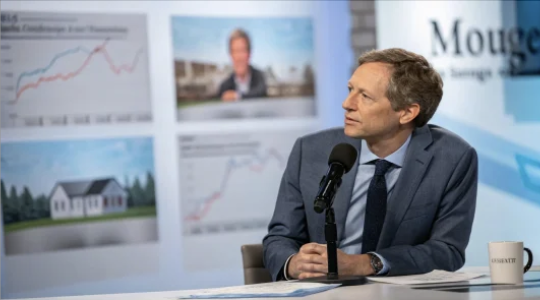Mortgage rates have reached their highest point in the past 15 years, creating concerns for homebuyers and homeowners alike. While it’s well-known that mortgage rates are closely related to yields on 10-year treasury bonds, there’s more to the story than meets the eye.
This article delves into the two key factors driving the recent surge in mortgage rates – one of which may not be quite so obvious. Understanding these factors will help you make informed decisions about your mortgage amidst these uncertain times.
Related: How to Pay off Your Mortgage in 10 Years
View this post on Instagram
A post shared by Taylor Sohns- CFP®, CIMA®, MBA- Finance (@lifegoalinvestments)
Table of Contents
ToggleReason #1: The Rising 10-Year Treasury Yield
Mortgage rates are set based on the yield paid on the 10-year treasury bond. As the first critical factor behind the recent spike in mortgage rates, the post-COVID surge in inflation has driven the 10-year treasury to its highest rate since 2000. But what exactly does this mean?
Ten-year treasury bonds are issued by the U.S. government and are considered one of the safest and most stable investments in the market. Their yields, or interest rates, fluctuate based on various factors, including inflation. When inflation is on the rise, investors often demand higher yields on these bonds, fearing that the higher prices may erode the value of their returns over time.
Since the COVID-19 pandemic, countries worldwide have experienced a noticeable surge in inflation, partly fueled by increased government spending to support businesses and individuals struggling with the economic downturn. This spike in inflation has translated to higher yields on 10-year treasury bonds, which in turn, directly impacts mortgage rates.
Reason #2: The Surprisingly Wide Spread above the 10-Year Treasury Yield
While it’s evident that the rising 10-year treasury yield has contributed to the surge in mortgage rates, it doesn’t quite explain the entire picture. The second, less-discussed factor behind these soaring rates is the prevalent banks charge above the 10-year treasury bond.
Historically, a relatively stable relationship has existed between 10-year treasury yields and average 30-year mortgage rates. However, the uncertain future of inflation has forced banks to take a more cautious approach, charging a higher spread above the 10-year treasury bond than usual.
Currently, the 10-year treasury yield (represented by the blue line in our analysis) stands at approximately 4.3%, while the average 30-year mortgage rate (the red line) hovers around 7.5%. This means there’s a more than 3% spread between the two – about double its historical norm.
But why is this happening? The answer lies in banks’ fear of future inflation, which threatens to undermine the value of their loans over time. By charging a higher spread above the 10-year treasury yield, banks attempt to mitigate the risks associated with potential inflationary pressures in the future.
Conclusion
In summary, mortgage rates have reached 15-year highs due to the skyrocketing 10-year treasury yield driven by post-COVID inflation and the unusually widespread charged by banks due to their concerns regarding future inflation. As both of these factors continue to put upward pressure on mortgage rates, homeowners and prospective buyers must stay informed and consider their options carefully.
While there’s no crystal ball to predict the future of mortgage rates and the economy as a whole, understanding the factors driving these changes can help you make informed decisions in the uncertain times ahead.
Frequently Asked Questions (FAQ)
1. What is causing the recent surge in mortgage rates?
Mortgage rates have significantly increased due to two key factors: the rising 10-year treasury yield and the surprisingly widespread above-the-10-year treasury yield. The post-COVID surge in inflation has driven the 10-year treasury yield to its highest point since 2000, and banks are charging a wider spread above this yield due to concerns about future inflation. Both these factors are contributing to the surge in mortgage rates.
2. How are mortgage rates related to the 10-year treasury yield?
Mortgage rates are closely tied to the yield paid on the 10-year treasury bond. When the yield on these bonds increases, mortgage rates tend to follow suit. This connection is because 10-year treasury bonds are considered safe investments, and their yields fluctuate based on various factors, including inflation. Higher inflation can lead to higher yields on these bonds, which, in turn, affect mortgage rates.
3. Why has inflation affected the rise of mortgage rates?
Inflation has played a significant role in the recent increase in mortgage rates. The post-COVID surge in inflation worldwide, partly driven by increased government spending, has led to higher yields on 10-year treasury bonds. This rise in inflation has made investors demand higher yields on these bonds to protect their returns from potential value erosion over time, which directly impacts mortgage rates.
4. What is widespread above the 10-year treasury yield, and why is it important?
The widespread above the 10-year treasury yield refers to the difference between the yield on the 10-year treasury bond and the average 30-year mortgage rate. Historically, this spread has been relatively stable. However, future inflation uncertainty has caused banks to charge a larger spread above the 10-year treasury yield. They are doing this to mitigate risks associated with potential inflationary pressures in the future.
5. How much wider is the spread above the 10-year treasury yield compared to historic norms?
The 10-year treasury yield currently stands at approximately 4.3%, while the average 30-year mortgage rate is around 7.5%. This results in a more than 3% spread, about double its historical norm. This wider spread reflects banks’ caution in light of potential inflationary pressures.
6. What should homeowners and prospective buyers do in response to these rising mortgage rates?
Homeowners and prospective buyers need to stay informed and consider their options carefully. While it’s impossible to predict the future of mortgage rates and the economy with certainty, understanding the factors driving these changes can help individuals make informed decisions amidst these uncertain times. Consider speaking with a financial advisor or mortgage expert to assess your situation and explore the best options available.

















